2011 Arctic Cat Crossfire Review
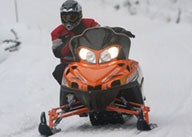
Crossfire can claw powder and run fast on the trails.
Many snowmobile enthusiasts find themselves in a dilemma. They don’t know what snowmobile they want. Some find the dedicated trail sleds fast, but not good for all around use. Mountain snowmobiles are pretty specific to one style of riding and on the trail are a handful to handle when compared to a trail sled.
Engine Type:Horizontal In-line
Cylinders:2
Engine Stroke:2-Stroke
Valve Configuration:Reed Valve
Displacement:794 / 48.4
Starter:Electric
Turbocharged:No
View Full SpecTo help make the buying decision a little easier, Arctic Cat offers its Crossfire line of crossover sleds. Of course, the other sled makers have their own crossover models, too, but we’re going to focus on Arctic Cat’s Crossfires — the 800 and 600.
The Crossfire model line has been around since 2006 and has been very successful for Arctic Cat. Since its inception, the model line has under gone various changes and updates, improved suspension, new high-output motors, electronic reverse and much more. One reason for its popularity is that the Crossfire fills a gap for the Arctic Cat supporter that exists between mountain riding and trail riding. While it does well at both, it excels at none.
With a wider front end than an M (Cat’s mountain line), the Crossfire’s front-end stays planted better on the trails, but not as planted as an F-series sled (Cat’s high performance trail model). The standard Crossfire 8 has the same height lug track as an F-series Sno Pro, but is longer. This works great on the trails, but if you are riding in more than six inches of powder, you might consider a track with a deeper lug. On the other hand, the shorter track carries more track speed up a mountain, which almost makes up for the shorter lug track. If you live in the West, or plan to venture off the beaten path, then consider installing a deeper lug track.
Some western riders who rarely leave the trails buy Ms because they want the image of being a mountain rider. The truth is many so called mountain riders would be better off on a Crossfire with its better trail handling characteristics. But try to convince them of that.
Many flatlanders purchase a crossover thinking, “Well if I ever go ride out West I will be able to ride this just fine, right.” That’s right you’ll do just fine but you probably won’t be bragging about highmarking everyone else. You will have to work a little harder but you just might surprise your friends how well you can do on a Crossfire. The skis though are too narrow to give the front end much floatation, so you want to be aware of that to keep the front end from diving. You will however, throttle past your buddies on the trail ride up to the mountains.
So where dose the Crossfire fit? If you are going to be riding on a trail with lots of chatter bumps, a Crossfire is well suited for stand-up riding as it rails over the chatter bumps. The Crossfire also fits in well for the rider who wants to launch off snow banks and whatever else they can find like a snow-covered Impala. In our opinion, The Crossfire is a better jumper than its F8 sibling. Some might be attracted to the Crossfire because it more resembles the old Firecat, which was a very fast and light snowmobile. Indeed, the Crossfire grew out of the Firecat as it adopted a similar chassis — stretched out with a longer track — and the powerplants were similar, until those changed over to reflect what there is now. While the Firecat “look” was one reason to favor a Crossfire, others might not like the bulk and the weight that generally is associated with the F sleds.
Crossfire Guts
The Crossfire 8 is in its second year with the Suzuki-built 800cc HO engine with batteryless electronic fuel injection. The HO proved itself during the 2010 model year with reliability and being the highest horsepower 800 on the snow. For 2011 it should retain the highest horsepower title at 160. Some of the horsepower gain comes from an improved exhaust system as the Crossfire 8 has a high RPM pipe. The resonator comes from Cat’s existing 1000 engine. And there’s a revised tuned manifold — or “y” pipe.
As for the engine itself the head is tight, meaning that it will have higher compression. By reducing the weight in the counter weight Cat engineers were able lighten up the crankshaft also. Even though engineers reduced the weight of the counter weights, in no way did they remove any of the structural strength. The 800 HO is a very well mannered powerhouse. It can be super smooth and mild mannered in the bottom end. Then be very strong and responsive in the mid-range. And flat out impressive and strong on the top end. So no matter where you like to spend your throttle time, the 800 is very well tuned to fit all types of riding conditions.
Suspension
The front suspension is the familiar AWS VI double-wishbone A-arm suspension with 9.2 inches of travel. Reliable and proven, the system works well. The front end features Fox Float Airshox and a sway bar for added stability. The Crossfire has an adjustable 42-44 inch ski stance that will keep the front end well planted in a tight corner. But with that width comes a little extra effort on the part of the pilot to get the snowmobile on one ski.
The rear slide-rail system has Fox Float Airshox for the rear arm and a Fox Zero Pro coil over shock in the front. There’s up to 17 inches of rear travel. On the standard Crossfire 8 the Cobra track measures 15” x 141” x 1.25”. The Crossfire 8 Sno Pro comes with the 1.5” tall Cobra track. The Sno Pro Limited or LTD gives the owner the option of the 1.5” Cobra track or a 2.25” Power Claw track like those found on Cat’s M series. With this track configuration the LTD is very well suited for mountain riding. The Crossfire Sno Pro and Sno Pro LTD also feature the M-series adjustable telescoping handlebar. This bar is in its third year and experience has taught us it functions very well. To date Cat remains unchallenged from any manufacturer trying to copy or improve its design.
Limited (LTD)
The limited edition Crossfire comes with some nice “extra” features to entice buyers. Styled in what Arctic Cat refers to as “Sublime” green, the LTD comes with the M series seat. It also adds hand guards and a sports gear bag that greatly enhances the storage on the snowmobile.
The best feature of the LTD is the choice of tracks. You have the option of the 1.5-inch Cobra track or the 2.25-inch Power Claw that comes standard on the M series. If you plan on spending to most of your time out West, then the Power Claw is definitely the best choice. On the trail you might loose a little track speed compared to the Cobra but you’ll make it up in the amount of traction that the 2.25-inch track will get. The LTD also comes with the same features as the Sno Pro — telescoping handlebars and Fox Float shocks.
Crossfire 600
The 600 is the other engine option in the Crossfire line up. The 600 is very similar to the 800, minus the bold power. The front and rear suspension comes with Fox Zero Pro coil over shocks. The track is the standard 141-inch Cobra track. The 600 has reverse but it is an electromechanical reverse instead of an engine reverse. So when you hit the reverse button the ACT Diamond Direct Drive is engaged into reverse. The 600 is rated at about 120 ponies.
Although most Arctic Cat racers who compete in the Iron Dog, the world’s longest snowmobile race, use F-series sleds, one backcountry specialty rider figures the Crossfire would make a better choice to handle the race’s nearly 2000 grueling miles from Anchorage to Nome to Fairbanks. Bret Rasmussen, who competed in the 2009 Iron Dog, says, “I think I know the F-6 fairly well. I spent a lot of time tuning them and then racing over 2000 miles.”
The Preston, Idaho backcountry technical riding instructor explains, “If I were to race in the Iron Dog again, I would ride a Crossfire. It is made for stand up style riding and I think it would be better suited for the Iron Dog. The Fs are heavier and they just take more of a beating. I don’t know why more racers don’t use the Crossfire.”
Likewise, know the Crossfire’s limitations on the trail, too. It is not a Cat F-series ditch burner. But still, it is one of the most confident and self-assured “trail” sleds on the snow. Its longer-than-the-F-sled skid makes for smooth ride.
Overall, in ride, comfort, power, and ergonomics the Crossfire 6 and 8 deliver what the a driver wants in versatility. Riding a dual-purpose snowmobile like the Crossfire is pleasurable and fun with dual-purpose hardware that likes to be challenged.
| 2011 Arctic Cat Crossfire 8 Specs | |
| Engine | Arctic/Suzuki 794cc, two-stroke, liquid-cooled, twin; 46mm throttle body, batteryless electronic fuel injection |
| Horsepower | 160-plus |
| Drive | Arctic RPM sensing drive with Arctic roller cam ACT driven |
| Front Suspension | Arctic AWS VI A-arm suspension; Fox Float shocks and sway bar; 9.2-inches of travel |
| Rear Suspension | Arctic FasTrack Long Travel parallel rail slide with aluminum Fox Zero Pro shocks with internal floating piston; up to 17-inches of travel |
| Length | 123.0 in |
| Width | 48.0 in |
| Ski Stance | 42.0 – 44.0 in |
| Track | 15 x 141 x 1.25 Cobra |
| Weight | N/A |
| Fuel Capacity | 12.2 US Gal |
| MSRP | US$10,799/C$12,999 |
Related Reading
2010 Arctic Cat Crossfire 8 Review
2011 Arctic Cat F8 EXT Review
2011 Arctic Cat Lineup Preview
All Things Arctic Cat on Snowmobile.com



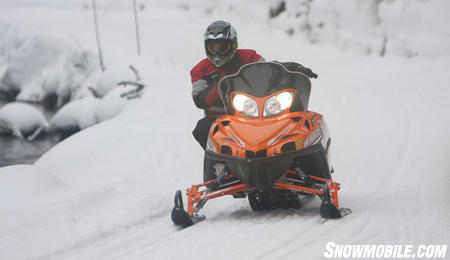
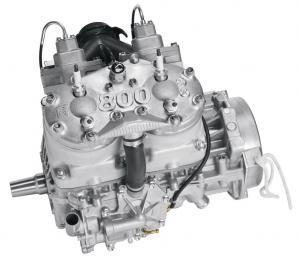
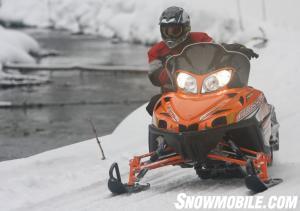
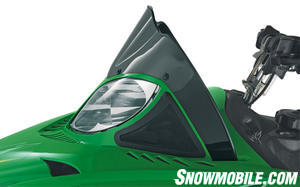
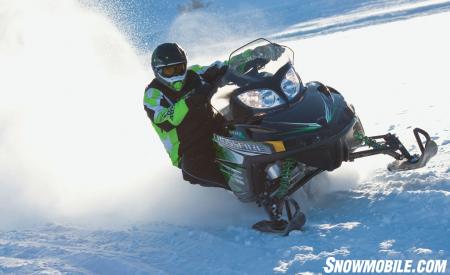
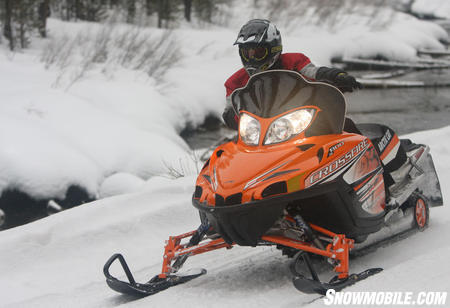
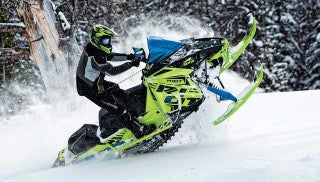

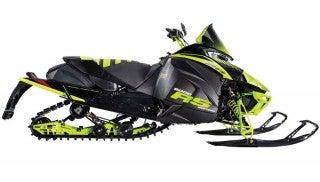


 Your Privacy Choices
Your Privacy Choices